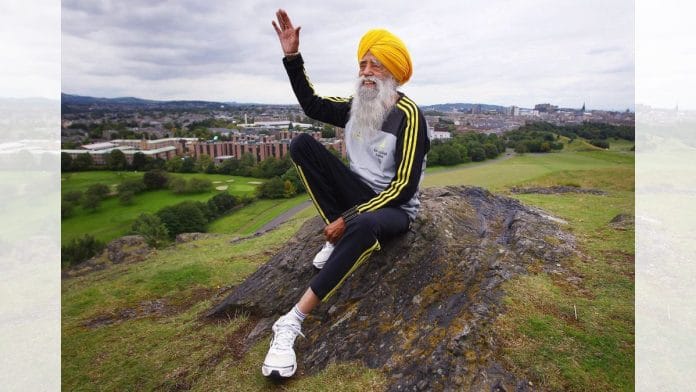Delhi: Veteran marathon runner Fauja Singh died at the age of 114. It was not an age-related death, but an accident. Singh was hit by a speeding car on the Jalandhar-Pathankot highway on 14 July.
The driver, 26-year-old non-resident Indian (NRI) Amritpal Singh Dhillon, has been arrested. Singh, a widely admired personality, was crossing the road in his village in Jalandhar when Dhillon ran him over with his Toyota Fortuner.
The incident has once again brought into focus one of India’s long-standing and recurring concerns: road safety and the lack of traffic discipline. Public safety and road behaviour are as much a reflection of India as its geopolitical standing or economic indicators. That is why India’s ongoing road safety crisis is ThePrint’s Newsmaker of the Week.
It was only last year that India witnessed one of the most horrific accidents in recent memory — the Pune Porsche case. A 17-year-old boy, driving his parents’ Porsche while allegedly intoxicated, mowed down two people riding a motorcycle. The incident sparked further outrage when the Juvenile Justice Board granted him bail within hours, imposing lenient conditions like writing a 300-word essay on road safety, attending counselling at an alcohol de-addiction centre, and assisting traffic police for 15 days. A year later — and coincidentally a day after Singh’s death — the board rejected the Pune city police’s plea to try him as an adult.
Also read: Pimpri Chinchwad shows how to put people before vehicles. It’s a model for urban India
Sharp rise in road accidents in India
According to Ministry of Road Transport and Highways data, hit-and-run cases in India have risen sharply — from 53,334 in 2014 to 67,387 in 2022. In 2023 alone, over 172,000 people died in road accidents — amounting to 474 deaths each day, or nearly one every three minutes. Of these, 54,000 people died because they were not wearing helmets, and 16,000 because they were not wearing seat belts. These numbers are a stark reminder of how deadly Indian roads remain.
In December last year, Union Minister of Road Transport and Highways Nitin Gadkari said these accidents were happening because people lack respect and fear for the law.
“There are many reasons for accidents, but the biggest reason is human behaviour,” Gadkari had said.
Every year, there is news about the government working to identify and rectify black spots — stretches of road known for frequent accidents — and launching campaigns asking citizens to take road safety pledges.
According to a 2021 notification by the Government of India, the Ministry of Road Transport and Highways identified 5,803 black spots on National Highways across 30 states and Union Territories, based on accident and fatality data from 2015 to 2018. Of these, temporary safety measures were implemented at 5,366 spots, while 3,215 had been permanently rectified, the ministry said.
Also read: Traffic safety doesn’t have to depend on CCTVs. New satellite tech is changing the game
Overcrowded roads, apathetic public
Road accidents also highlight how Indian roads are used — and mismanaged. Most roads are overcrowded, with motorised vehicles like cars, autos, and two-wheelers jostling for space alongside bicycles, carts, and rickshaws. Hawkers often occupy sidewalks, and haphazard parking narrows the usable road space even further.
A report by Down to Earth links rising road fatalities to India’s mobility systems. According to the report, over 90 vehicles are registered every minute, and more than 88 per cent of these are private cars or two-wheelers.
One positive example comes from Kolkata, which has taken some proactive measures for road safety by implementing scientifically backed speed limits, capping vehicle speeds at 50 km/hr in urban areas and even lower in high-risk zones.
Whether such measures, if applied to other cities, will yield results remains to be seen. But road accidents are not only taking lives — they are also affecting the country’s GDP.
In March, Gadkari said that India loses 3 per cent of its GDP due to around five lakh road accidents every year. He made these remarks while addressing AMCHAM’s conference on Technology Interventions for road safety: US-India Partnership. Gadkari also criticised Detailed Project Report (DPR) consultants for poor planning and execution.
“DPR consultants are the main culprits who are responsible for the road accidents. (They prepare DPRs) sometimes because of cost-saving, other different reasons and non-serious approach,” Gadkari said.
But ultimately, as Gadkari says, it’s human behaviour that can bring real change.
(Edited by Prashant)







Yet, most pedestrians continue to walk wrongly on the left of the roads in the absence of pavements, inviting motorists to hit them.